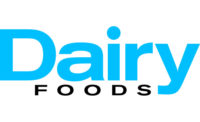When it comes to cheese trends with staying power for 2018, think all natural, artisanal and organic. Those are the top three cheese-related trends, according to Dairy Foods’ 2018 Cheese Outlook Study. Almost nine out of 10 respondents (89%) selected each of those trends as being “in style” for 2018. Following close behind were specialty cheeses, including flavored cheeses (87%), aged cheeses (85%) and snacking/portion-controlled cheeses (85%).
What’s not so hot within the cheese arena this year? Processed cheese. Two-thirds (66%) of respondents pointed to this cheese food product as being “out of style.” Also losing traction, more than half of respondents said, are raw milk cheeses (62%) and fortified cheeses (51%).
Investing in natural and organic
Respondents also ranked the all-natural trend most important in terms of near-term investments. More than a third (38%) of respondents said their companies plan to invest in all-natural cheeses over the next 24 months.
Tied for second were organic cheeses and reduced-fat cheeses, with 30% of respondents indicating that their companies planned to invest in these trends, followed by aged cheeses (28%), reduced-sodium cheeses (21%), snacking/portion-controlled cheeses/packaging (21%) and artisanal cheeses (19%).The average number of trends earmarked for investment is just shy of four (3.9) per company.
It’s also worth noting that two-thirds of domestic respondents said their companies currently offer USDA certified organic cheeses. And 81% of those companies plan to increase the production of organic products within the next 24 months.
More than two-thirds (70%) of respondents also indicated that their companies plan to use new flavors for their cheese products in 2018. Smoked flavors came out on top, with 40% of respondents stating that their companies planned to use them. Rounding out the top five are herbs (36%), cheese blends (26%), bold flavors (26%) and hot pepper (26%). See the chart, page 22.
Key motivators respondents cited for their companies to invest in trends/new product development include meeting consumer and market demands, increasing profit and sales, and creating product-related appeal.
Current emphasis on retail, natural cheese
The retail market accounts for the largest share of cheese sales within the respondents’ companies, at 38% (averaged). The foodservice/institutional and commercial (broker) markets represent 25% and 23% of sales, respectively. The export market, meanwhile, account for 8% of sales; “other” markets boast a 6% share.
Four in five of the respondents’ companies (81%) currently manufacture natural cheese. Almost a third (32%) produce cultured cheeses such as cottage cheese or cream cheese, while a similar number (30%) make processed cheese. The average number of cheese product types produced by respondents is slightly less than two (1.8). See the chart, this page.
More than half (53%) of the companies that manufacture natural cheese make cheddar cheese. Rounding out the top 10 are mozzarella (42%), Gouda (39%), pizza cheese (32%), Colby (29%), Asiago (26%). Feta (26%), Parmesan/Romano (24%), cream cheese (21%) and Jack styles, provolone and specialty (all tied at 21%). The average number of natural cheese products produced by these companies is slightly less than five (4.8).
To produce these cheeses, the respondents companies rely on an average of 5.2 ingredients/additives outside of milk. Almost three-quarters (72%) of the companies use cultures and/or enzymes, while more than half (51%) use flavor ingredients. Colors (38%), anti-caking agents (34%), emulsifiers/stabilizers/gums (30%), spices (30%), preservatives/inhibitors (23%), functional ingredients (21%) and phosphates (21%) round out the top 10.
Looking forward to the next 24 months, more than one-third of respondents’ companies plan to add or purchase more cultures (40%) and/or enzymes (36%), while almost a fifth (19%) intend to add or purchase more anti-caking agents, colors and/or flavor ingredients.
Perhaps not surprisingly, cheddar is also the best-selling cheese for more than a quarter (26%) of all respondents’ companies. Processed cheese (9%), feta (6%) and mozzarella (6%) complete the top four.
As for product sizes produced, 40-pound blocks are the most popular, with 40% of respondents reporting that their companies manufacture this size. Coming in a close second are 5-pound loaves (37%), followed by 10-pound loaves (28%), wheels (21%), 640-pound blocks (14%) and 500-pound barrels (9%). Moreover, 35% of respondents said their companies produced “other” sizes, including but not limited to 10-pound cans, 50-pound bags, 7-ounce chunks and crumbles/wedges.
Companies also differ when it comes to how they handle the whey byproducts from cheese production. More than a third (36%) of respondents said their companies dry the whey and process it for domestic customers. But more than a quarter (26%) said their companies sell the whey to domestic processors in an unprocessed state, while the same number said their companies simply dispose of it. See the chart, this page.
No one-size-fits-all packaging solution
Almost two-thirds (62%) of respondents said their companies cut and wrap their own cheese, while 21% said they send it to a third party for cutting and wrapping. Almost a fifth (17%) of respondents, meanwhile, said their companies do both.
Survey respondents also indicated that their companies rely on a wide variety of packaging formats; the average number used per company is 3.4. Topping the list are flexible films, which are used by three in five (60%) companies. Rounding out the top five are vacuum packaging (51%), plastic containers such as cups and shakers (45%), pouches and bags (43%) and paper/paperboard cartons (38%). See the chart, this page.
Frequent changes also are common within the cheese packaging space. Two-fifths (40%) of respondent said their companies made changes to packaging materials or a packaging look within the past 24 months. Of those companies that did make modifications, 53% plan to make additional changes within the next 24 months.
The Market Research Division of BNP Media (publisher of Dairy Foods) surveyed Dairy Foods’ magazine and newsletter subscribers between Dec.6 and Dec. 22, 2017. Nearly three-quarters (74%) of the respondents were male, and 26% were female. The mean age was 47. Almost two-thirds (64%) of respondents have more than 10 years of industry experience. Please visit www.clearmarkettrends.com to purchase and download the entire report, as well as to access a wide inventory of other studies performed in the dairy industry. You may also email the Market Research Division at info@clearmarkettrends.com if you have any questions.








